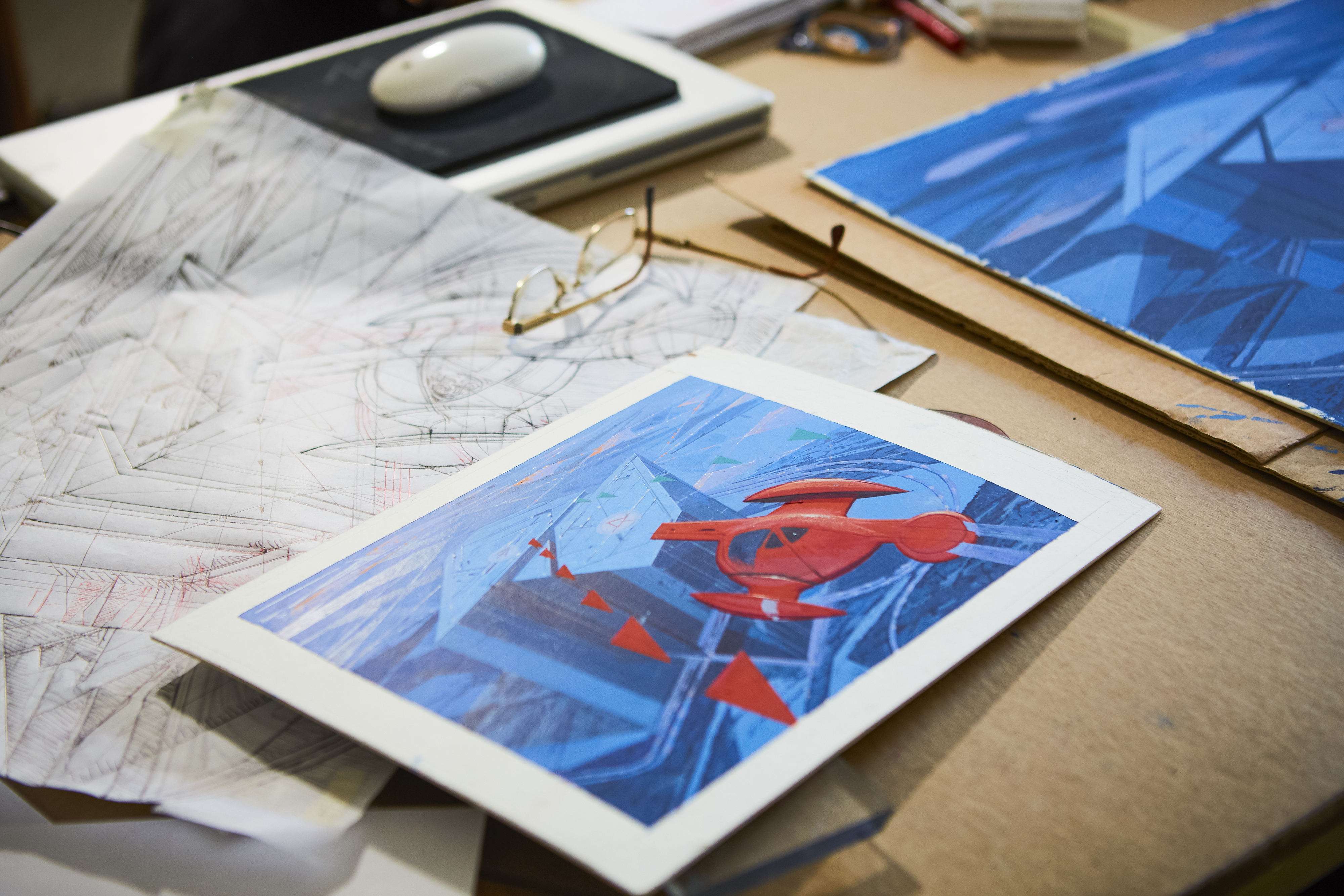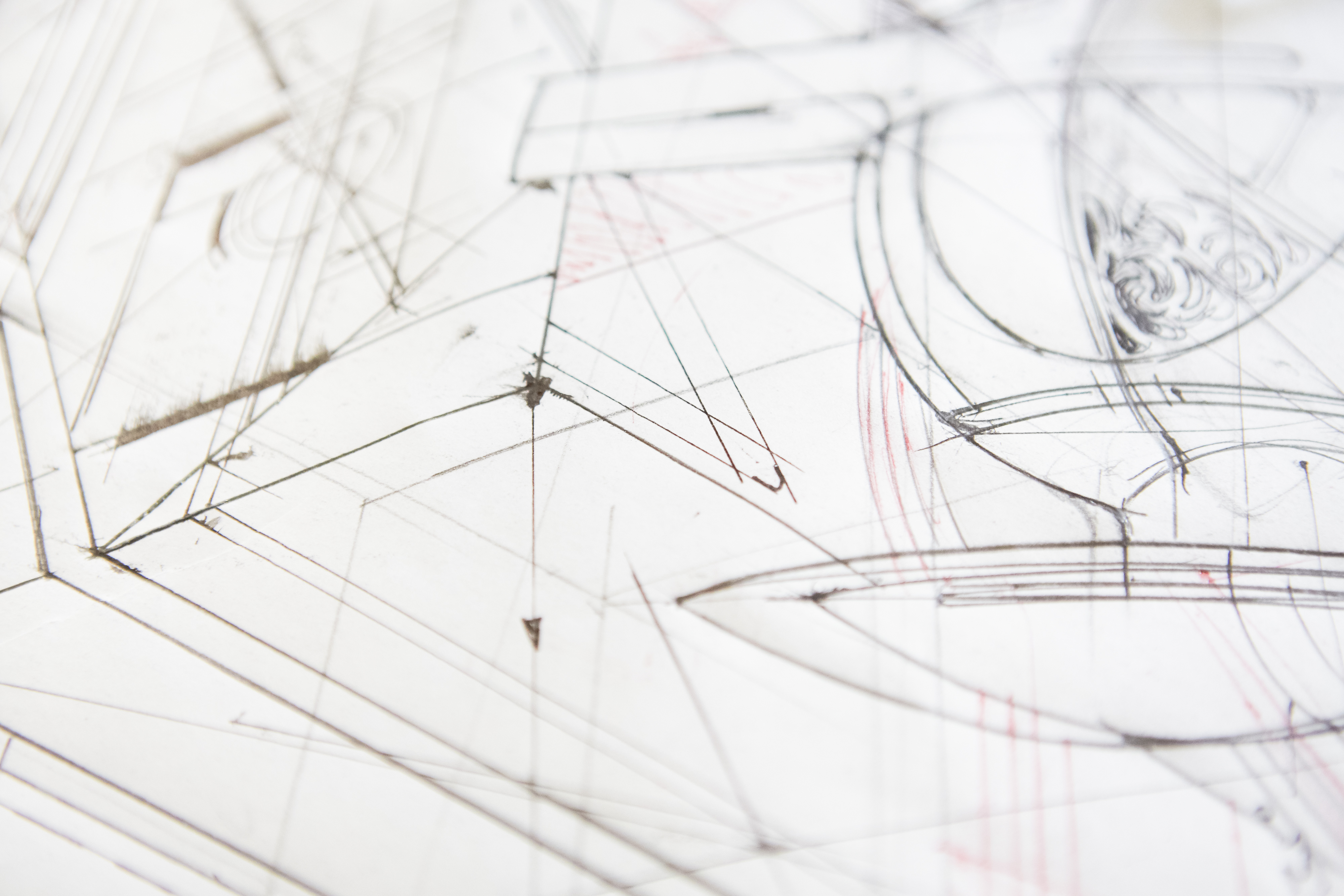Remembering Syd Mead, the ‘Oscar Wilde of designers’
The American ‘visual futurist’ behind the imaginary worlds for movies including Blade Runner and Tron as well as conceptual design for Ford, Phillips and Sony passed away aged 86 in December 2019. Here Wallpaper* salutes his life and influence

The number of times Syd Mead’s name is mentioned as an inspiration by designers of all types – but especially professional car designers from Ferrari’s Flavio Manzoni to ex-BMW Group design boss Chris Bangle – is truly remarkable. Indeed, Bangle dubbed him, ‘the Oscar Wilde of designers: when you think you have a new idea, you find he’s drawn it all before and usually decades ago.’ The key to his influence was his ability to take what was known about technology and project it into the future, but not so far that people couldn’t relate to it. Using a highly-detailed and refined, but usually only 2D rendering technique, flying cars, cities floating in the sky and even giant metallic greyhounds all came from his imaginative mind.
Born on July 18th 1933 in St Paul, Minnesota, Mead was a natural at drawing and encouraged by his art enthusiast, Baptist minister father. ‘By the time I was four I was drawing cars with people and by 11 portraits of my uncle Henry which were actually quite good,’ he recalled in an interview back in 2015. ‘The more accurately I could illustrate my imaginary world the more satisfying it was. That accelerated the development of my technique.’
After gaining subsidised tuition for a professional arts degree from Art Center, Pasadena, California he started at Ford’s Advanced Design studio in 1959 but didn’t last long. ‘My contribution to American car design is the tail-light on the ’63 Falcon Futura,’ he joked. He actually worked on the Gyron show car too but quit in 1961. ‘When you work for a big corporation, you’re part of the idea-manufacturing business, and they may or may not use your idea. You have to accept that.’
My film credit on Blade Runner was "visual futurist" because it’s visual and I’m doing future stuff. I made the title up on the phone. I knew it had to be bumper sticker-friendly.
Headhunted by an ex-Ford designer, he became a commercial designer and illustrator working on lucrative accounts for large American corporations. The marketing books for US Steel in particular featured his futuristic visions of brilliantly-imagined and rendered vehicles which became a sensation at the time and are still sought-after today. He then became a partner at the Mead Hansen agency and eventually got one of his complete designs made for Ford, when it was a client rather than his employer – a rare custom truck based on a ’63 Ford Station wagon – and also redesigned the group’s logos, Ford, Lincoln and Mercury.
In 1970 he launched an industrial design consultancy, Syd Mead Inc, in Detroit and gained varied projects and clients including corporate jets, cassette recorders and electric cars for Philips Electronics, cruise ship interiors for Norwegian Caribbean Lines and architectural renderings for InterContinental Hotels. Moving back to California in 1975 he attracted the attention of the film industry and worked on vehicle, spaceship, city and character designs for Star Trek: The Motion Picture (1979), Blade Runner and Tron (both 1982), 2010 (1984), as well as Elysium (2013), Tomorrowland (2015) and Blade Runner 2049 (2017).
His designs for Blade Runner are probably his best-known work. Asked why he thought they’ve endured he replied: ‘The most important thing is that Blade Runner never violates its technical premise. We made about 20 full-size vehicles, including three Spinners, the taxi and Sebastian’s truck. As the character Sebastian was a tinkerer, to my mind his truck would be made out of parts scavenged from a local junkyard, so I had to think about what parts would be in a junkyard in 2019?” Mead did get to see almost all of 2019 before losing his battle with lymphoma complications on December 30th. His self-invented job title for that movie sums up his career and self-deprecating persona perfectly: ‘My film credit on Blade Runner was "visual futurist" because it’s visual and I’m doing future stuff. I made the title up on the phone. I knew it had to be bumper sticker-friendly.’

Syd Mead Sketches

Syd Mead Sketch Detail
INFORMATION
Receive our daily digest of inspiration, escapism and design stories from around the world direct to your inbox.
Guy Bird is a London-based writer, editor and consultant specialising in cars and car design, but also covers aviation, architecture, street art, sneakers and music. His journalistic experience spans more than 25 years in the UK and global industry. See more at www.guybird.com
-
 These Guadalajara architects mix modernism with traditional local materials and craft
These Guadalajara architects mix modernism with traditional local materials and craftGuadalajara architects Laura Barba and Luis Aurelio of Barbapiña Arquitectos design drawing on the past to imagine the future
-
 Robert Therrien's largest-ever museum show in Los Angeles is enduringly appealing
Robert Therrien's largest-ever museum show in Los Angeles is enduringly appealing'This is a Story' at The Broad unites 120 of Robert Therrien's sculptures, paintings and works on paper
-
 The Wallpaper* style team recall their personal style moments of 2025
The Wallpaper* style team recall their personal style moments of 2025In a landmark year for fashion, the Wallpaper* style editors found joy in the new – from Matthieu Blazy’s Chanel debut to a clean slate at Jil Sander
-
 In celebration of Bruno Sacco, the man who brought order and elegance to Mercedes design
In celebration of Bruno Sacco, the man who brought order and elegance to Mercedes designThe car designer Bruno Sacco has died. Sacco shaped Mercedes-Benz design for nearly a quarter of a century. We look back on his impressive legacy
-
 In memoriam: automotive designer Marcello Gandini (1938-2024)
In memoriam: automotive designer Marcello Gandini (1938-2024)As the man behind the form of the modern supercar, Marcello Gandini was hugely influential. We look back at some of his most accomplished designs
-
 Remembering the life and work of designer Tom Karen, who has died at the age of 96
Remembering the life and work of designer Tom Karen, who has died at the age of 96Tom Karen (1926 – 2022) was an industrial designer who delighted in the power of design to transport and transform, and shaped some of the most idiosyncratic icons of the 1960s, 1970s and beyond
-
 Peugeot’s sparky 308 gets hybrid power and handsome lines
Peugeot’s sparky 308 gets hybrid power and handsome linesThe Peugeot 308 proves that mass-market design needn’t be dull, blending hybrid power with sharp lines and excellent detailing
-
 BMW Motorrad brings out the big guns for its newest cruisers
BMW Motorrad brings out the big guns for its newest cruisersBMW Motorrad R 18 Bagger and Transcontinental set the tone for high-voltage cruising with a brand collaboration with speaker specialist Marshall
-
 Dacia’s new Manifesto concept is a true outdoor utility vehicle
Dacia’s new Manifesto concept is a true outdoor utility vehicleUtilitarian auto brand Dacia sets a bold new agenda with its Manifesto, a concept car pitched at the active outdoor market
-
 The sun sets on traditional supercars at California’s Monterey Car Week
The sun sets on traditional supercars at California’s Monterey Car WeekMonterey Car Week, the world’s most prestigious car gathering, is showcasing ever-more extravagant special editions, coachbuilt cars and all-new electric concepts. Here are seven key machines from 2022
-
 Is McLaren’s GT a sports car, a tourer, or the best of both?
Is McLaren’s GT a sports car, a tourer, or the best of both?The McLaren GT is a capable all-rounder dressed up in svelte supercar clothes. It might also be the last of its type